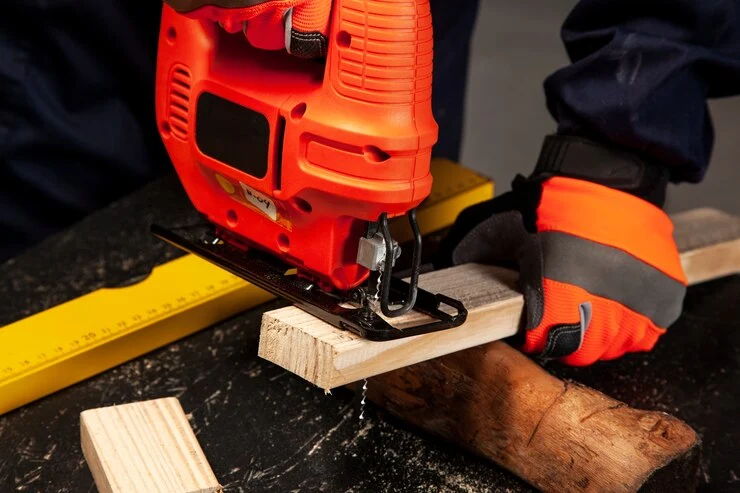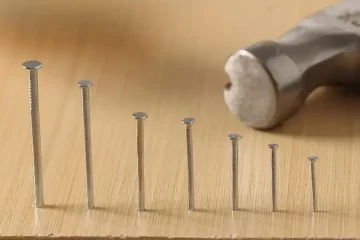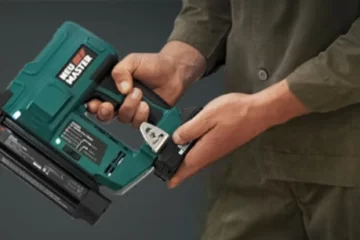The secret weapon? A nail gun! These handy tools take the effort out of hammering, letting you secure wood, siding, and more with just a squeeze. But how exactly do they work?
In this quick guide, we’ll explore the different types of nail guns and the mechanisms that drive those nails in with power!
What is a Nail Gun?
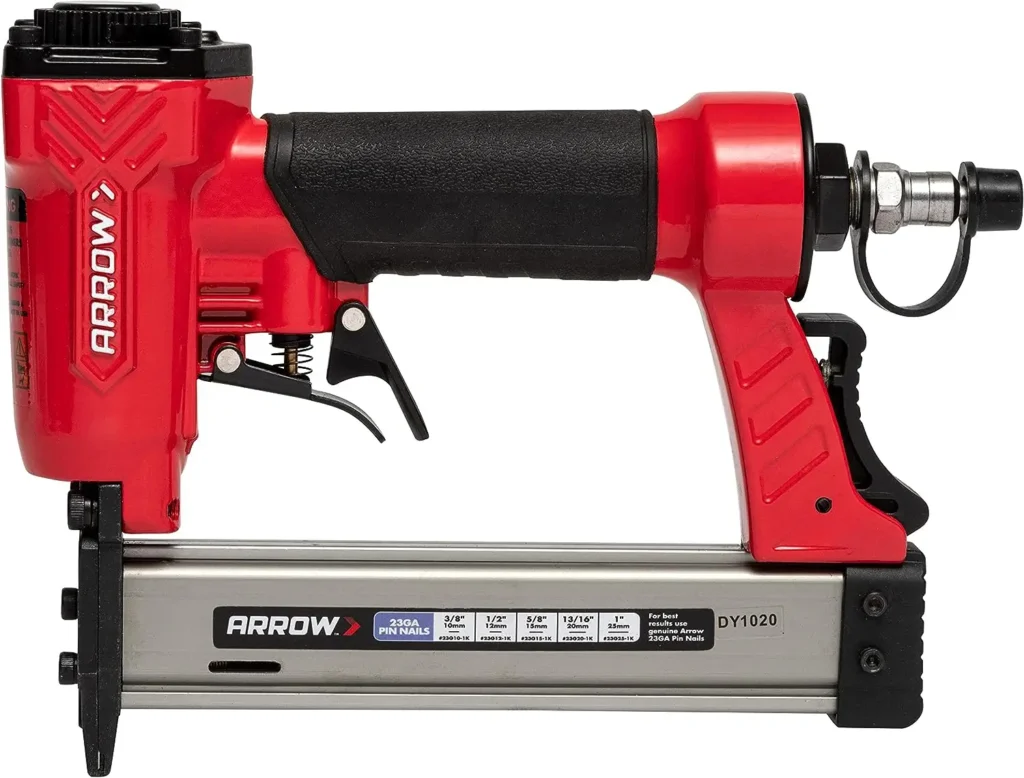
A nail gun, alternatively referred to as a nailer or nail gun, is a power tool that operates similarly to a hammer but with greater speed and force, driving nails into a surface quickly and efficiently.
How Do Nail Guns Work?
Most nail guns rely on a pneumatic system. An air compressor (sold separately) generates compressed air that rushes into the nail gun. This compressed air pushes a piston within the gun’s body.
The piston is connected to a long metal rod called a driver. As the piston slams forward, the driver makes contact with the nail head, forcefully driving it into your work surface.
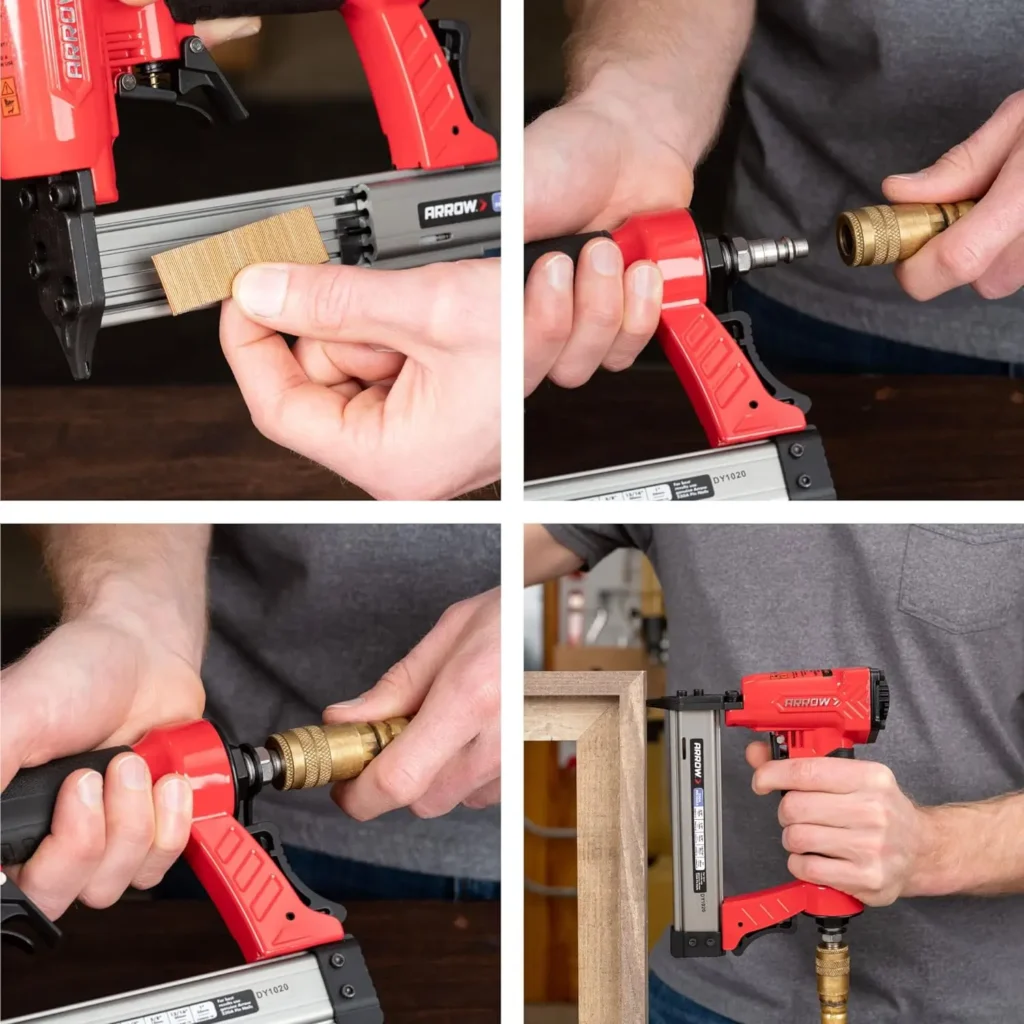
This process is powered by compressed air from an air compressor, an electric motor, or a gas-powered engine, enabling quick and efficient nailing without the need for manual hammering.
What is a Nail Gun used For?
Nail guns are used for a variety of fastening jobs, especially in construction and woodworking. Here are some common applications:
1. Construction
Nail guns are workhorses in the construction industry. They’re used for framing houses, building decks, installing subfloors, laying roofing shingles, and countless other applications.
2. Carpentry
Woodworking projects of all kinds benefit from nail guns. From building furniture and cabinets to installing trim and moldings, nail guns save time and effort compared to using a traditional hammer.
3. DIY Projects
Nail guns are becoming increasingly popular for do-it-yourself projects around the house. They’re great for tackling jobs like building bookshelves, hanging crown molding, or putting together simple furniture.
Types of Nail Guns and Their Uses
There are many different types of nail gun nails, each designed for a specific application. The type of nail you’ll need will depend on the material you’re working with and the thickness of the material.
Here are six different types of nail guns and their uses with their benefits and drawbacks
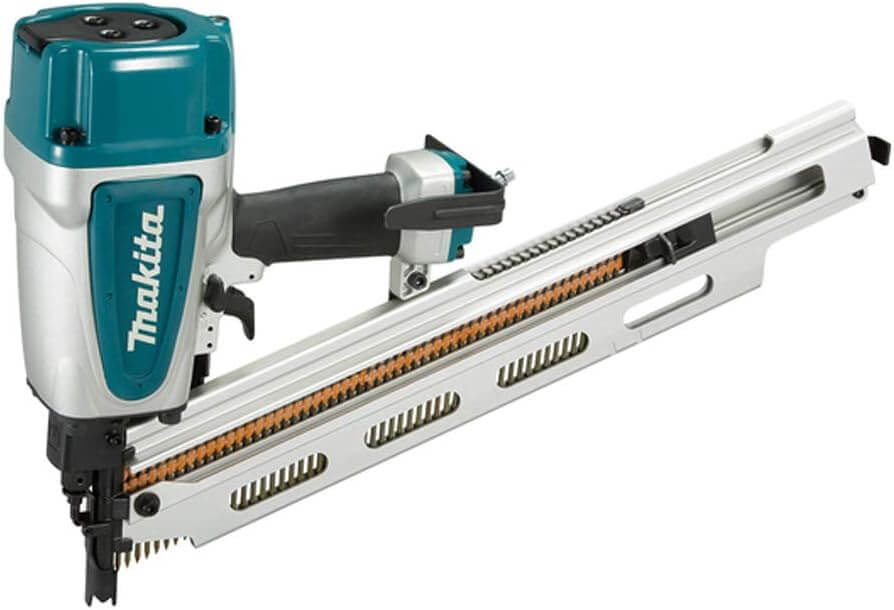
1. Framing Nailers: Building the Bones
- Uses: Heavy-duty applications like building walls, decks, and floor joists.
- Benefits: Powerful enough to drive large nails into tough materials.
- Drawbacks: Bulky and heavy, not ideal for delicate work.
- PSI: 70-130 PSI
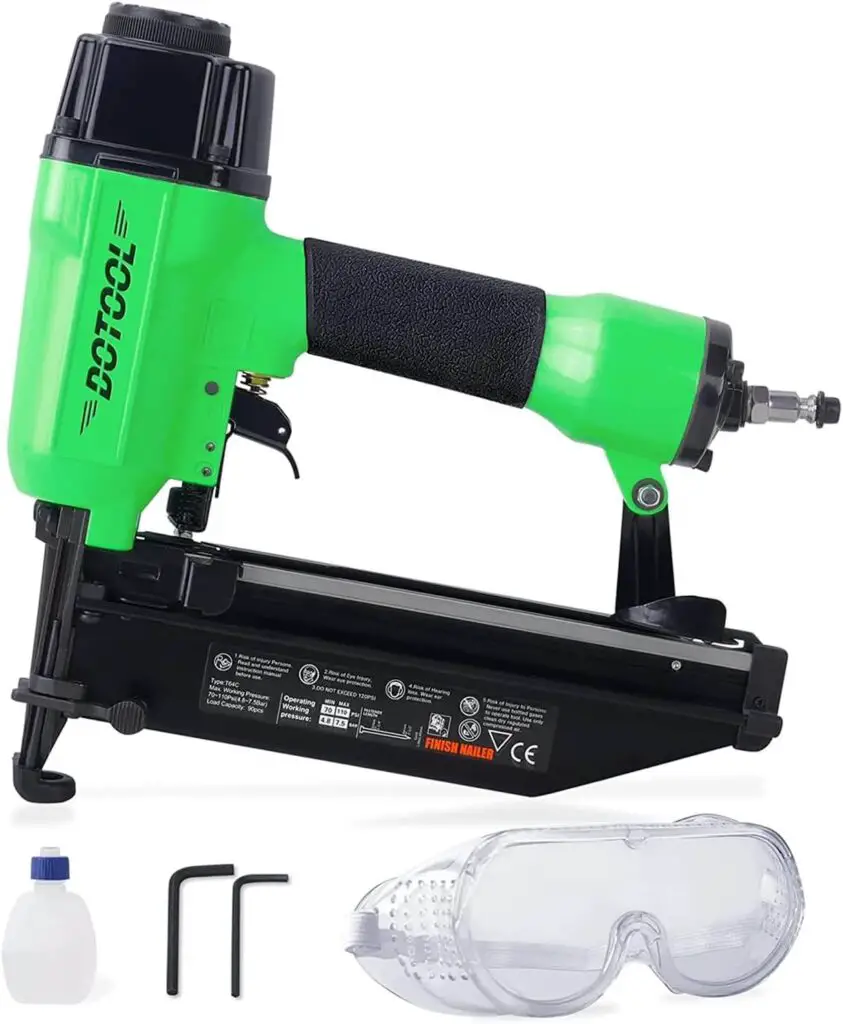
2. Finishing Nailers: The Trimming Touch
- Uses: Trim carpentry, cabinets, furniture building, and other projects requiring a flawless finish.
- Benefits: Shoots smaller nails that leave minimal holes, perfect for those “invisible fastener” look.
- Drawbacks: Less powerful than framing nailers.
- PSI: 60-90 PSI
3. Roofing Nailers: Shingling Your Way to Success
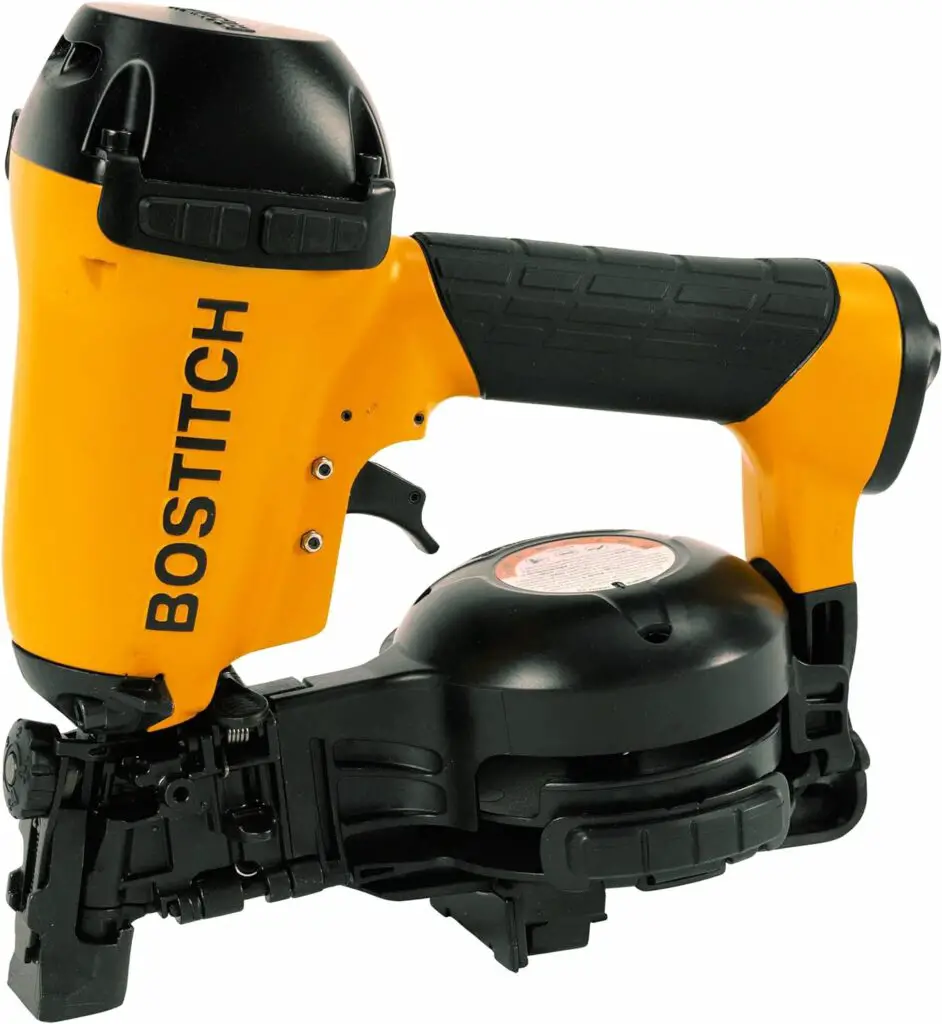
- Uses: Securing roofing shingles quickly and efficiently.
- Benefits: Designed to handle specific roofing nails with large heads for optimal shingle grip.
- Drawbacks: Limited use outside of roofing projects.
- PSI: 90-120 PSI
4. Flooring Nailers: Step Up Your Flooring Game
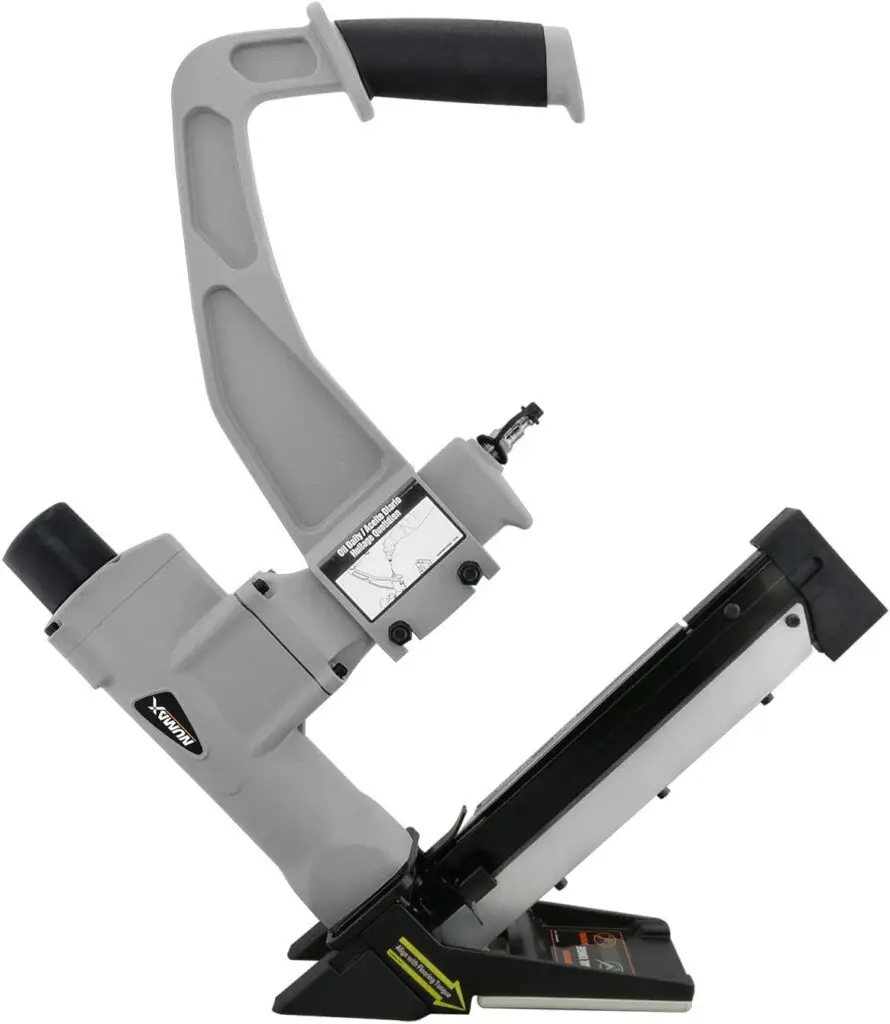
- Uses: Installing hardwood, engineered wood, and laminate flooring.
- Benefits: Drives nails at precise angles to ensure secure flooring joints.
- Drawbacks: May not be suitable for all flooring types.
- PSI: 70-100 PSI
5. Brad Nailers: Delicate Does It

- Uses: Delicate trim work, picture frames, assembling lightweight furniture, and crafts.
- Benefits: Shoots very thin brad nails that leave tiny holes, ideal for fine woodworking.
- Drawbacks: Not for heavy-duty applications.
- PSI: 40-60 PSI
6. Pin Nailers : Tiny Tacks, Big Jobs
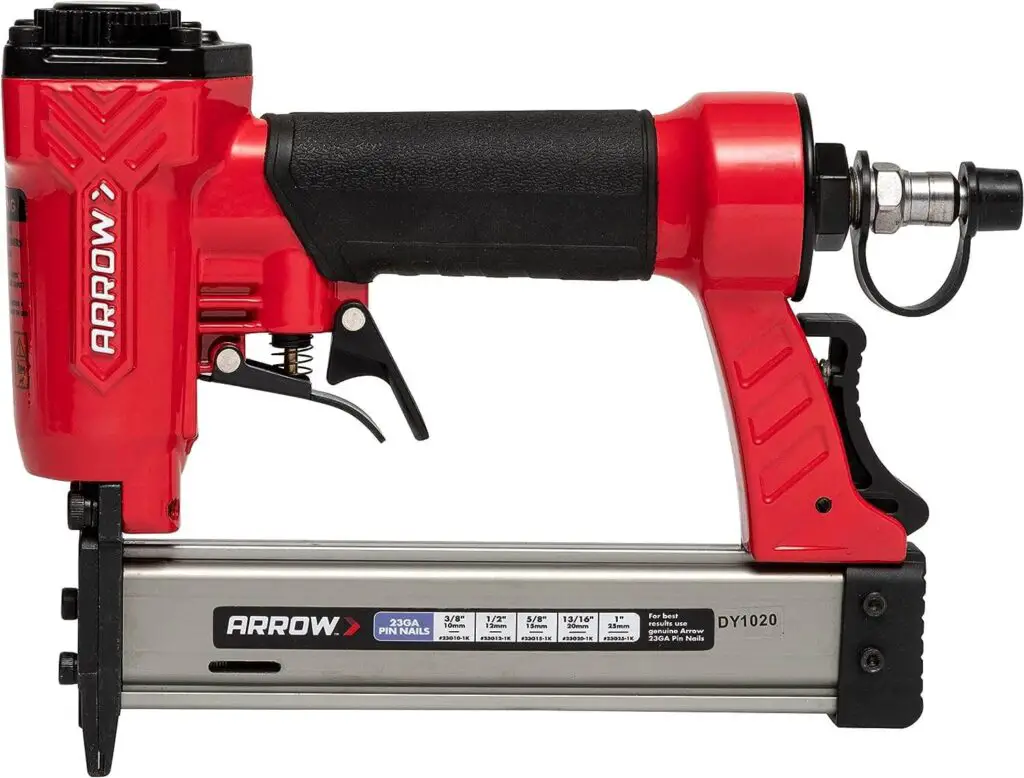
- Uses: Upholstery work, assembling small cabinets, and fine woodworking.
- Benefits: Shoots even smaller pins than brad nailers for the most inconspicuous fastening.
- Drawbacks: Limited holding power compared to other nailers.
- PSI: 60-80 PSI
Conclusion
So, there you have it! Nail guns are powerful tools that can take your DIY projects and construction jobs to the next level. With different types for various applications, choosing the right one for the task is key.
Remember, safety is paramount, so always wear proper eye protection and follow the manufacturer’s instructions. Now, grab your nail gun of choice, and get ready to conquer your next project with speed and efficiency!
FAQS
What is a Brad nail gun?
A Brad nail gun is essentially a mini-me of the nail gun world. It’s a lightweight and maneuverable power tool designed for precise work with thin materials.

